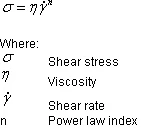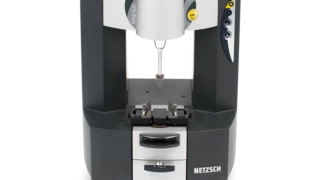Glosario
Power Law Model
The power law model is a common rheological model to quantify (typically) the Shear ThinningThe most common type of non-Newtonian behavior is shear thinning or pseudoplastic flow, where the fluid viscosity decreases with increasing shear.shear thinning nature of a sample, with the value closer to zero indicating a more Shear ThinningThe most common type of non-Newtonian behavior is shear thinning or pseudoplastic flow, where the fluid viscosity decreases with increasing shear.shear thinning material.
It can be used to describe any material that shows power law behavior which is a proportional response of StressStress is defined as a level of force applied on a sample with a well-defined cross section. (Stress = force/area). Samples having a circular or rectangular cross section can be compressed or stretched. Elastic materials like rubber can be stretched up to 5 to 10 times their original length.stress to shear rate (or linear plot of viscosity vs shear rate). Technically, a power law index, n>1 denotes that the sample is Shear ThickeningWhile most suspensions and polymer structured materials are shear thinning, some materials can also show shear thickening behavior where viscosity increases with increasing shear rate or shear stress.shear thickening; n<1 denotes that the sample is Shear ThinningThe most common type of non-Newtonian behavior is shear thinning or pseudoplastic flow, where the fluid viscosity decreases with increasing shear.shear thinning and n=1 shows a Newtonian, viscous behaviour.
Note: do not use this model on data areas that show plateaus, i.e., the zero shear and infinite shear viscosities.


